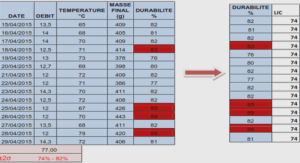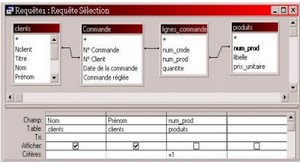Cours introduction to Microsoft Access, tutoriel & guide de travaux pratiques en pdf.
Access vs. Excel
Access databases and Excel spreadsheets although originally very different, have evolved to have similar functions. Although either type of program can do many, but not all, of the things that the other one does, there are some things which are easier in one program than the other. Excel is not database management systems. Excel spreadsheets store data in rows and columns called worksheets. The areas within the worksheet where the rows and columns intersect are called cells. The most common use of spreadsheets is to manage basic information such as telephone numbers, employee names, financial data, calculations, etc.
Access stores data in tables that look similar to worksheets but function quite differently. Tables, the foundation of all relational databases function both independently and interdependently with other tables to allow the database user to combine data from multiple sources and analyze and/or report information in almost limitless ways.
The Access Interface
This section introduces the Access interface and discusses how to use menus and tools bars, create databases and switch between database components.
Starting Access and Opening a Database
1. Click on the START button on your computer and position your cursor over the PROGRAMS menu to view a list of installed programs. Once you see the list, position the cursor over Microsoft Office and then click on Microsoft Access.
2. After opening Access, you will be presented with the window shown in .
3. If you want to edit an existing database, you can either go to File—Open, or move your cursor to the lower right-hand side to click on Open.
4. If you are creating a new database, you can also either go to File—New, or move your cursor to the lower right-hand side to click on Create a new file. You will be presented with five options on the right side menu .
Figure 2 5. Unlike Word documents, Excel spreadsheets, and Power Point presentations, you must save an Access database before you start working on it. After selecting « Blank database », you will first be prompted to specify a location and name for the database. In the New Database dialog box, type in a name for the database and a location and click on Create as shown in Figure 3.




